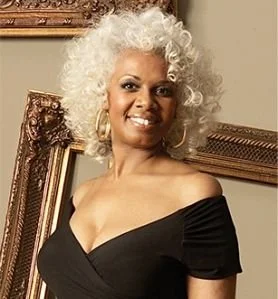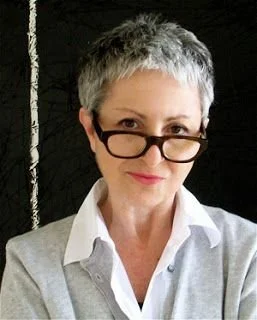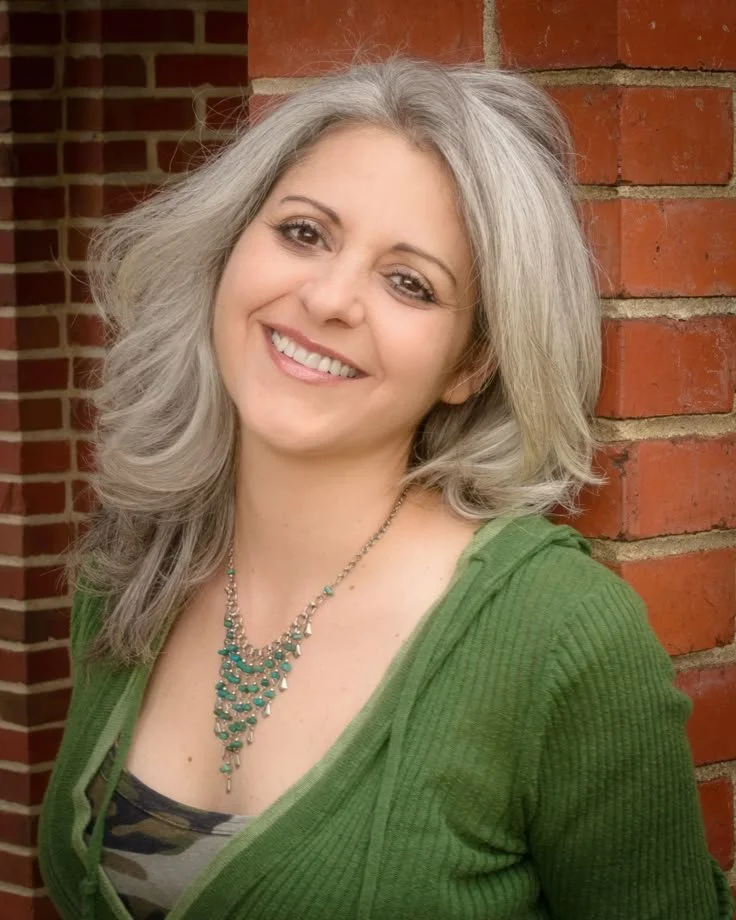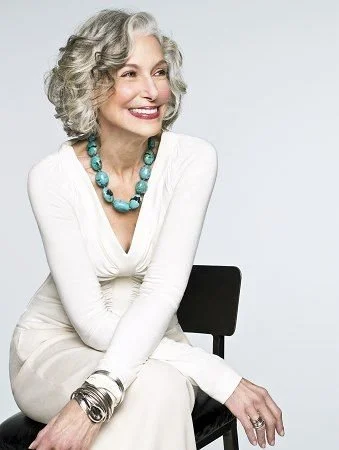Does My Color Season Change with Age?
There is a popular misconception that as a human ages, their color season tends to become softer and cooler (less vibrant, less warm.) This, as far as I can tell from my actual hands-on experience working with real people, is completely false.
Gray Hair
I believe the simplest answer to the origin of this myth is the prevalence of graying hair with advanced age. People perceive hair—especially hair that is darker in youth—as looking faded and muted/soft once it turns gray. While jet black hair undeniably becomes lighter when silvering, it does not necessarily turn soft. In fact, what we find from observing the myriad ways that people “go gray,” is that everyone seems to go gray in a way that is uniquely theirs. Gray hair can be warm, cool, neutral, vivid, or soft. When someone embraces their natural graying process, they will find that the same palette suits them throughout their whole life.
Aging and Invisibility
There is a secondary concern which, like graying hair, is legitimate but flawed upon further examination. People (often women) perceive that their features grow muddier, fuzzier, or indistinct with age. With age, a couple undeniable things happen: the skin thins and the face loses fat and volume. These two coupled together can create sagging, wrinkles, and an overall fragile look to the skin that is an unwelcome surprise as the years go on.
However, I find that many women go in the exact wrong direction to compensate for these inevitable signs of visible aging. Instead of sticking with the colors and style that suited them best in their youth, they believe that wrinkled skin and gray hair requires softer shades of makeup and less elaborate fashion and jewelry. Indeed, much of what I observe to be that aging, dulling effect so many women complain about is a response to aging, not the aging itself!
When women age, they begin to believe that they don’t deserve to take up space, to be noticed, to be looked at approvingly. Because it happens less frequently than when they were teenagers or young women, they start to believe this is their lot and they “deserve” to fade into the background. So do I see older women who look like faded, tired versions of their younger self? Sure! But when I’m through with them, they find that the woman in the mirror looks more like who they remember at 30… or 15… or even 5! We always look like ourselves—forever. This is an inescapable, but beautifully affirming thing. There are features on your face that never change, from the moment you enter this world to the moment you leave. It is more useful to look at aging as a gradual discovery of new layers.
A maple tree is a maple tree, throughout all the years of its life, despite looking different as it shifts through the calendar year.
Aging Gracefully in Your Palette
What can change with regards to your palette is how you wear your colors. Although you will not age into wearing a different temperature or totally different intensity, you may tend to shift your selection of favorite shades within that palette.
Instead of considering gray hair as a lesser version of non-gray hair, look at it as swapping out an accessory of one color for a different version. If you had a favorite scarf in a rich black, and one day you found the same scarf in a light silver, you would not wear those two scarves in identical ways. You “wear” your gray hair constantly as a permanent accessory, so treat it as decoration, not as a flaw.
A True Winter woman who finds that her hair has shifted from brunette to a pale silver is not required to wear softer colors—but she may shift the placement of neutrals and colors to create her best effect. Below, you see two similar True Winter outfits. Both contain neutral tops and colorful trousers.
A True Winter woman with dark hair will often find she looks great with a light neutral (such as white or silver) directly under her face. Choosing a white top and colorful pants creates a beautiful harmony with her dark brown hair. If the same woman’s hair goes silver later in life, wearing white directly under her face does not create the same beautiful contrast. Instead, she might opt to place a dark neutral (here, black) directly under the face, which will contrast in a lovely way with her new light hair. She might also choose to wear an element of darkness or color in earrings, which will stand out in a dramatic, interesting way against the light backdrop of silver hair. And if a silver-haired woman still wanted to incorporate light colors into her wardrobe, she could place them in the bottom half of an outfit, wear them as accessories, or in patterns.
Each seasonal palette has their own unique way of wearing colors—and each person has their unique twist on wearing their season. I draped a mother and daughter pair who both turned out to be Soft Summers. They wear their palettes in slightly different ways owing to their features, ages, and tastes. The daughter was very drawn to deeper jade and smoky brown shades, whereas the mother found that she instinctively loved the rosy pink hues of her palette best. Both women will have crossover colors, but each will choose their favorite individual shades to complement the exact tones represented in their hair and face. As the daughter ages, she may grow to prefer some of the shades her mother currently wears.
A mother daughter pair, both Soft Summer, looking their respective ages.
















